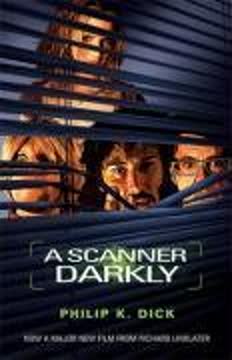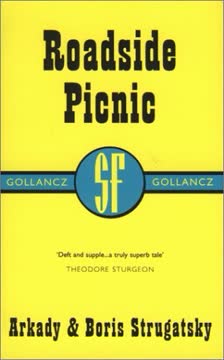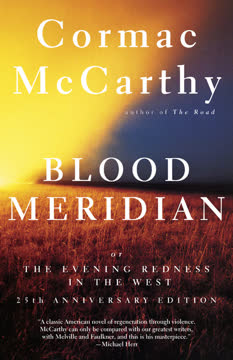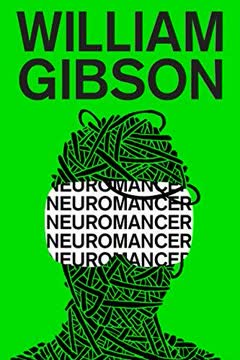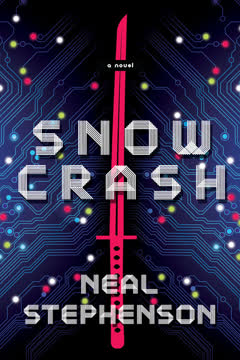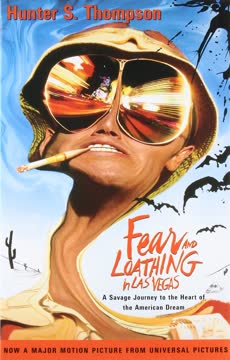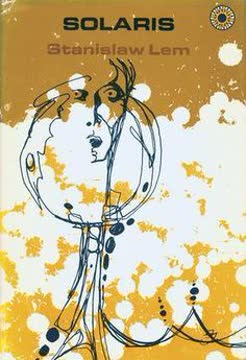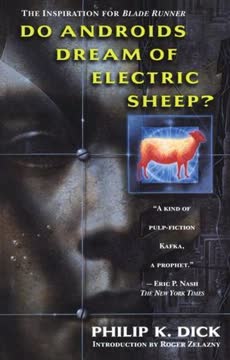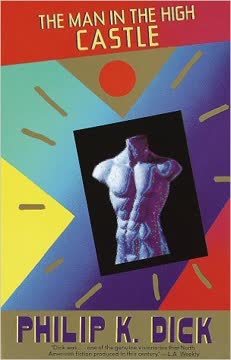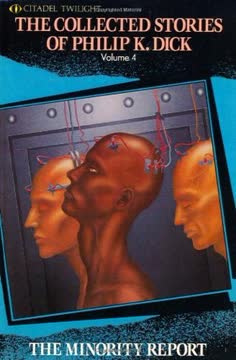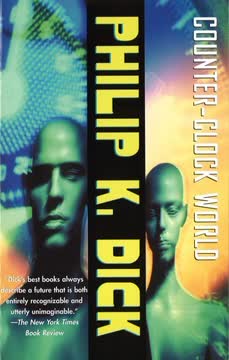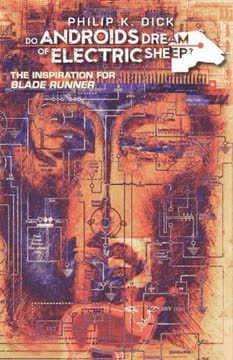Plot Summary
Bugs in the Brain
The story opens with Jerry Fabin, a man tormented by imaginary aphids crawling over his body, a vivid metaphor for the psychological and physical decay caused by drug abuse. His friend Charles Freck tries to help, but is himself lost in the world of addiction, obsessed with scoring more of the drug Substance D ("Death"). The opening sets the tone: a world where reality is slippery, paranoia is rampant, and the line between hallucination and truth is blurred. The characters' lives are already unraveling, and the sense of doom is palpable.
The Double Life Begins
Bob Arctor / Fred / Bruce, an undercover narcotics agent, is introduced. He lives among addicts, posing as one of them, while secretly reporting to his superiors as "Fred." To protect his identity, he wears a scramble suit that constantly shifts his appearance. Arctor's mission is to trace the source of Substance D, but his double life is already taking a toll. He is alienated from both the "straights" (mainstream society) and the addicts he surveils, and his sense of self begins to erode. The scramble suit becomes a symbol of his fractured identity.
Paranoia and Sabotage
Arctor's household is a den of suspicion. His prized cephalochromoscope is sabotaged, and his car is tampered with, nearly killing him and his friends. Jim Barris, a manipulative and possibly psychotic housemate, is suspected but never confronted directly. The group's paranoia grows, fueled by drug use and the constant threat of betrayal. The house itself, once a place of camaraderie, becomes a site of mutual distrust and potential violence. The characters' relationships fray as they spiral deeper into addiction and suspicion.
Surveillance and Identity
The authorities bug Arctor's house, and he is assigned to review the surveillance tapes—effectively spying on himself. The process is disorienting; Arctor must edit out his own presence from the tapes to maintain his cover, further fragmenting his identity. The surveillance technology, meant to reveal the truth, instead deepens the confusion. Arctor's dual roles as observer and observed blur, and he begins to question who he really is. The theme of identity—already unstable due to drugs and undercover work—becomes central.
The House of Mirrors
The narrative becomes increasingly surreal. Arctor's perception of reality is warped by Substance D, and he experiences hallucinations, memory lapses, and moments of derealization. The housemates' conversations are circular and nonsensical, reflecting their cognitive decline. Arctor's relationships, especially with Donna, are strained by his inability to connect emotionally or physically. The house, once a refuge, is now a labyrinth of confusion, with each character lost in their own private hell.
Barris's Betrayal
Barris, seeking favor or perhaps out of malice, contacts the police with fabricated evidence that Arctor is a major dealer and part of a vast conspiracy. He provides doctored tapes and "evidence," but his claims are ultimately dismissed as delusional. Nevertheless, Barris's betrayal accelerates Arctor's downfall, as the authorities decide to focus their investigation on Arctor himself. The betrayal is both personal and systemic, highlighting the dangers of living in a world where trust is impossible.
The Mind Splits
Arctor undergoes psychological testing, revealing that Substance D has split his brain's hemispheres, causing a profound dissociation. He can no longer integrate his experiences; his left and right brains compete, leading to confusion, memory loss, and a loss of self. The tests confirm what the reader has already seen: Arctor is no longer capable of functioning as a coherent individual. The damage is likely permanent, and his career—and life as he knew it—are over.
Donna's Distance
Arctor's relationship with Donna, the woman he loves, is marked by longing and frustration. Donna refuses intimacy, citing her own drug use and boundaries. She is both a source of comfort and an unattainable ideal. Their interactions are tinged with sadness, as Arctor realizes he will never have the connection he desires. Donna's role is ambiguous—she is both a fellow addict and, as later revealed, an undercover agent herself, further complicating Arctor's sense of betrayal and loss.
The Collapse of Arctor
As Arctor's addiction worsens, he loses his job, his friends drift away, and his sense of reality collapses. He is manipulated by both Barris and the authorities, and his attempts to maintain control are futile. Eventually, he is deemed unfit for duty and is sent to New-Path, a rehabilitation center. The transition is abrupt and disorienting; Arctor is stripped of his identity, possessions, and agency. He is now just another casualty of the drug war.
The Trap Closes
It is revealed that Donna is an undercover agent working for the authorities. Arctor's entire descent into addiction and madness was orchestrated so he could be placed in New-Path, which is suspected of being the source of Substance D. Arctor, now brain-damaged and barely functional, is used as an unwitting spy, a "camera" to gather evidence from within. The system's willingness to destroy individuals for the sake of the greater good is laid bare.
Withdrawal and New-Path
At New-Path, Arctor—now called Bruce—undergoes brutal withdrawal. He is cared for by New-Path Staff who see him as just another addict. His memories fade, his personality dissolves, and he becomes a shell of his former self. The rehabilitation process is dehumanizing, and the promise of recovery is hollow. Arctor's fate is to be used and discarded by the very system that claimed to save him.
The Farm of Forgetting
As part of his "rehabilitation," Bruce is transferred to a New-Path farm in Northern California. He is assigned menial labor, working with plants and animals, but his cognitive abilities are so diminished that he can barely function. The farm is revealed to be the source of Substance D, grown from blue flowers hidden among the crops. Bruce's final act is to pick a flower, intending to bring it to his "friends," a dim echo of his former mission.
The Blue Flowers
The blue flowers cultivated at the New-Path farm are the raw material for Substance D. The organization that claims to cure addiction is, in fact, perpetuating it. Bruce, in his broken state, is the perfect spy—he cannot betray the operation because he no longer understands it. The cycle of exploitation and destruction is complete.
Sacrifice and Aftermath
Donna and her handler discuss the moral cost of sacrificing Arctor for the greater good. Donna is wracked with guilt, recognizing that Arctor never understood what was happening to him and never consented to his fate. The system's cold logic is contrasted with the personal suffering of those it uses. The novel ends with a sense of loss and futility, as the true enemy is revealed to be not just drugs, but the institutions and choices that perpetuate suffering.
The Meaning of Loss
The author's note dedicates the novel to friends lost to addiction, emphasizing that the punishment for seeking happiness was far too great. The story is not a moral lesson, but a lament for lives destroyed by forces beyond their control. The final chapters reflect on memory, identity, and the impossibility of returning to what was lost.
The Enemy Within
The novel's central metaphor is the enemy within: the drugs that destroy the mind, the institutions that betray their own, and the personal choices that lead to ruin. Arctor's journey is both a personal tragedy and a commentary on a society that sacrifices individuals for abstract goals. The true enemy is not just Substance D, but the systems and mindsets that allow such destruction to occur.
The Last Gaze
In the novel's closing scene, Bruce/Arctor, now a shell of a man, picks a blue flower from the New-Path farm, intending to bring it to his friends. He is unaware of its significance, but the gesture is a faint glimmer of hope—a reminder of the humanity that persists even in the most broken. The story ends with a sense of mourning, but also a recognition of the enduring need for connection and meaning.
Characters
Bob Arctor / Fred / Bruce
Bob Arctor is the novel's central figure, an undercover narcotics agent whose mission to infiltrate the world of Substance D addicts leads to his own psychological and physical destruction. As "Fred," he reports to his superiors, and as "Bruce," he becomes a patient at New-Path. Arctor's journey is one of increasing dissociation, as his dual roles and drug use split his mind and erase his sense of self. He is both victim and instrument of the system, ultimately sacrificed for a cause he cannot comprehend. His relationships—with Donna, his friends, and himself—are marked by longing, confusion, and loss. Arctor's fate is a powerful indictment of the costs of the drug war and the fragility of identity.
Donna Hawthorne
Donna is Arctor's love interest and a small-time dealer, but she is also revealed to be an undercover agent. She maintains emotional and physical distance from Arctor, both protecting herself and manipulating him for the greater mission. Donna's dual role mirrors Arctor's, and her guilt over his fate is palpable. She is both a source of comfort and a symbol of betrayal, embodying the novel's themes of duplicity, sacrifice, and the impossibility of genuine connection in a world defined by surveillance and suspicion.
Jim Barris
Barris is Arctor's housemate and the novel's primary antagonist. He is intelligent, cunning, and deeply untrustworthy, constantly scheming and sabotaging those around him. Barris's betrayal of Arctor to the authorities is both personal and emblematic of the larger system's betrayals. He represents the dangers of unchecked paranoia and the corrosive effects of a world where trust is impossible. Barris's actions accelerate Arctor's downfall and highlight the novel's critique of both individual and institutional malice.
Charles Freck
Freck is a peripheral figure, a fellow addict whose attempts to escape his circumstances—through suicide or seeking help—are both darkly comic and deeply sad. His hallucinated "eternal reading of sins" after a failed suicide attempt encapsulates the novel's blend of absurdity and tragedy. Freck's fate is a microcosm of the larger story: the search for meaning and relief in a world that offers only suffering and confusion.
Ernie Luckman
Luckman is another of Arctor's housemates, notable for his humor and relative stability compared to the others. He is a victim of circumstance, caught in the web of addiction and paranoia that ensnares the group. Luckman's near-death experience (choking while Barris does nothing) underscores the dangers of their environment and the erosion of basic human decency.
Jerry Fabin
Jerry's descent into madness, marked by his obsession with imaginary bugs, is an early warning of the fate that awaits the others. His eventual institutionalization is both a personal tragedy and a symbol of the broader destruction wrought by Substance D. Jerry's story is a cautionary tale within the larger narrative.
Hank
Hank is Arctor's superior, always encountered in a scramble suit, representing the impersonal and dehumanizing nature of the system. He is both supportive and coldly pragmatic, ultimately sacrificing Arctor for the mission. Hank's role highlights the novel's critique of institutions that value results over individuals.
New-Path Staff (Mike, George, Executive Director)
The staff at New-Path are a mix of former addicts and authority figures, tasked with rehabilitating the residents. Their methods are often dehumanizing, and their true motives are ambiguous—especially as New-Path is revealed to be complicit in the production of Substance D. They embody the novel's theme of systems that perpetuate the very problems they claim to solve.
Michael Westaway
Westaway is a staff member at New-Path and a handler for Donna. He provides an outside perspective on the events, reflecting on the moral cost of sacrificing individuals like Arctor for the greater good. His conversations with Donna frame the novel's ethical questions.
Thelma
Thelma is a child at New-Path who befriends Bruce/Arctor. Her innocence and impairment serve as a poignant counterpoint to the adults' suffering, highlighting the intergenerational impact of addiction and loss.
Plot Devices
Scramble Suit
The scramble suit, which conceals the wearer's appearance and voice, is both a practical tool for undercover work and a metaphor for the loss of self. It allows Arctor to move between worlds, but at the cost of his own identity. The suit's constant shifting reflects the instability of perception and the impossibility of true connection in a world defined by deception.
Surveillance and Self-Observation
The novel's central plot device is the surveillance of Arctor's house, with Arctor himself assigned to review the tapes. This recursive structure—spying on oneself—deepens the themes of paranoia, self-alienation, and the collapse of identity. The technology meant to reveal the truth instead creates more confusion, mirroring the effects of Substance D.
Substance D
Substance D is both a literal drug and a symbol of the forces that destroy individuals and communities. Its effects—splitting the brain, erasing memory, inducing paranoia—mirror the novel's narrative structure and themes. The revelation that New-Path, the rehabilitation center, is the source of Substance D completes the cycle of exploitation and destruction.
Betrayal and Sacrifice
The novel is driven by acts of betrayal—Barris's treachery, Donna's manipulation, the system's sacrifice of Arctor. These betrayals are both personal and institutional, highlighting the costs of a society that values abstract goals over individual lives. The theme of sacrifice is central: Arctor is destroyed for a cause he never understands.
Split-Brain and Cognitive Dissonance
The effects of Substance D—splitting the brain's hemispheres—are mirrored in the novel's structure and style. The narrative is fragmented, disorienting, and often contradictory, reflecting the characters' cognitive decline. The split-brain motif is both a medical reality and a metaphor for the divided self, the impossibility of wholeness in a broken world.
Analysis
A Scanner Darkly is a harrowing exploration of identity, surveillance, and the human cost of the war on drugs. Philip K. Dick uses the story of Bob Arctor—a man who loses himself in the process of trying to save others—to critique a society that sacrifices individuals for the illusion of control and safety. The novel's recursive structure, with its layers of deception, surveillance, and psychological fragmentation, mirrors the effects of addiction and institutional betrayal. Dick's portrayal of addiction is both compassionate and unflinching, emphasizing the randomness and inevitability of loss. The revelation that the system meant to cure is also the source of the problem is a powerful indictment of institutional hypocrisy. Ultimately, the novel is a meditation on the impossibility of true understanding—of oneself, of others, of reality itself—in a world defined by fear, suspicion, and the relentless pursuit of control. The final image of Arctor, broken but still reaching for connection, is both tragic and deeply human, a testament to the enduring need for meaning in the face of overwhelming loss.
Last updated:
FAQ
Synopsis & Basic Details
What is A Scanner Darkly about?
- Undercover Agent's Descent: The novel follows Bob Arctor, an undercover narcotics agent, as he infiltrates a group of drug users in a dystopian near-future California, becoming increasingly addicted to the brain-damaging drug Substance D. His mission to uncover the source of the drug blurs the lines between his identity as an agent ("Fred") and his persona as an addict ("Bob").
- Erosion of Reality: As Arctor's drug use intensifies, his perception of reality fragments, leading to hallucinations, paranoia, and cognitive dissociation, mirroring the psychological effects of Substance D on his brain. The narrative explores themes of identity, surveillance, and the nature of reality itself.
- Systemic Betrayal Unveiled: The story culminates in Arctor's unwitting sacrifice, as he is sent to a rehabilitation facility, New-Path, which is ultimately revealed to be the very source of Substance D, exposing a profound institutional betrayal at the heart of the war on drugs.
Why should I read A Scanner Darkly?
- Profound Identity Exploration: Readers should delve into A Scanner Darkly for its harrowing and deeply personal exploration of identity loss, as protagonist Bob Arctor's sense of self is systematically eroded by his undercover work and drug addiction. It offers a unique, first-person perspective on the psychological toll of living a double life.
- Unflinching Social Commentary: The novel provides a powerful, prescient critique of the war on drugs, exposing the hypocrisy and dehumanizing tactics of both law enforcement and rehabilitation institutions. Philip K. Dick's semi-autobiographical narrative lends raw authenticity to its depiction of addiction's devastating impact on individuals and communities.
- Masterful Blend of Sci-Fi & Philosophy: Dick masterfully combines speculative fiction elements, like the scramble suit and advanced surveillance technology, with profound philosophical questions about reality, perception, and free will, making it a thought-provoking and unforgettable reading experience.
What is the background of A Scanner Darkly?
- Author's Personal Experience: Philip K. Dick drew heavily from his own experiences with drug addiction and the counterculture in 1970s California, dedicating the novel to friends who suffered permanent damage or death from drug abuse. The "Author's Note" explicitly lists these individuals and their fates, underscoring the novel's raw, autobiographical core.
- Near-Future Dystopian Setting: Set in a suburban Orange County, California, in 1994, the novel depicts a society where the "war on drugs" has escalated, leading to pervasive surveillance, a fractured social fabric between "straights" and "dopers," and the emergence of highly addictive, brain-damaging substances like Substance D.
- Exploration of Split-Brain Theory: Dick integrates contemporary scientific theories, particularly the split-brain research of Joseph E. Bogen and Michael S. Gazzaniga, into the narrative. This scientific context provides a pseudo-scientific basis for the cognitive dissociation experienced by Substance D users, lending a chilling realism to Arctor's mental decline.
What are the most memorable quotes in A Scanner Darkly?
- "What does a scanner see? Into the head? Down into the heart? Does a passive infrared scanner like they used to use or a cube-type holo-scanner like they use these days, the latest thing, see into me—into us—clearly or darkly?" (Chapter 11): This quote encapsulates the novel's central theme of surveillance and its impact on identity, questioning the limits of observation and the possibility of true self-knowledge in a monitored world. It directly references the title, A Scanner Darkly, and the biblical passage it alludes to.
- "Two souls, alas, are dwelling in my breast, / And one is striving to forsake the other." (Chapter 11, Goethe's Faust): This German quote, which Arctor recites, perfectly articulates his profound internal conflict and fragmented identity, torn between his persona as an undercover agent and his reality as an addict. It highlights the psychological complexities of Bob Arctor's motivations and his split-brain condition.
- "Drug misuse is not a disease, it is a decision, like the decision to step out in front of a moving car." (Author's Note): This controversial statement from Philip K. Dick's personal note challenges conventional views on addiction, framing it as a choice with severe, deterministic consequences, and setting a stark, morally neutral tone for the narrative's tragic events.
What writing style, narrative choices, and literary techniques does Philip K. Dick use?
- Unreliable, Shifting Narration: Dick employs a third-person limited perspective that frequently blurs the line between objective reality and subjective hallucination, often shifting within Arctor's fragmented consciousness. This narrative choice immerses the reader in the disorienting experience of Substance D, making them question the veracity of events alongside the protagonist.
- Philosophical Digressions & Intertextuality: The narrative is punctuated by philosophical musings, scientific excerpts (like the split-brain research), and literary allusions (Goethe, St. Paul), elevating the story beyond a simple drug narrative into a profound meditation on human perception, identity, and the nature of reality. These elements enrich the themes in A Scanner Darkly.
- Darkly Humorous & Tragic Tone: Despite the grim subject matter, Dick infuses the story with a unique blend of absurd humor and profound tragedy, particularly through the characters' nonsensical conversations and Freck's darkly comic hallucination of eternal sin-reading. This stylistic juxtaposition amplifies the pathos of their doomed existence.
Hidden Details & Subtle Connections
What are some minor details that add significant meaning?
- Jerry Fabin's "Carrier-people": Jerry's early delusion of "Carrier-people" unknowingly spreading aphids (Chapter 1) subtly foreshadows the systemic nature of Substance D's distribution and the unwitting complicity of individuals like Arctor in its spread. It hints that the "contamination" is not just personal but societal, a key A Scanner Darkly analysis point.
- Barris's "Eleven-Cent Silencer": Barris's failed attempt to create a silencer that instead amplifies sound (Chapter 4) is a darkly humorous detail that symbolizes his incompetence and the futility of his elaborate schemes, contrasting with the sophisticated, invisible surveillance technology used by the authorities. It highlights the amateurish, yet dangerous, nature of the drug world's internal conflicts.
- The Maylar Microdot Corporation: Arctor's hallucination of the tiny "Maylar Microdot Corporation" and its lost penny (Chapter 12) is a surreal detail that underscores the triviality and absurdity of the characters' daily struggles and the "war on drugs" itself, suggesting that their grand missions are often focused on insignificant, almost invisible, details.
What are some subtle foreshadowing and callbacks?
- Jerry Fabin's Aphid Delusion: Jerry's initial torment by imaginary aphids (Chapter 1) directly foreshadows Arctor's own cognitive decline and eventual institutionalization, where he too will be a "damaged beyond repair" individual. The "bugs in his hair" become a potent symbol of the irreversible brain damage caused by Substance D, a crucial element in Substance D explained.
- The "Dog Shit Day" Incident: The car sabotage and Arctor's subsequent hallucination of dog shit on his engine (Chapter 5) is a callback to the elderly couple's complaint about dog waste (Chapter 5) and foreshadows the pervasive, untraceable nature of the sabotage against him. It blurs the line between external threat and internal delusion, a key aspect of Bob Arctor's psychological complexities.
- Donna's "Spunky without Spooky": Donna's casual reference to "Spunky without Spooky" (Chapter 8) and her later recounting of Tony Amsterdam's vision of a "doorway" (Chapter 13) subtly hints at her deeper, almost spiritual, understanding of the world's brokenness and the fleeting nature of transcendent experiences, contrasting with Arctor's more immediate, drug-induced perceptions.
Who are the most significant supporting characters?
- Jim Barris: The Architect of Malice: Barris, Arctor's housemate, is a pivotal figure whose petty, yet dangerous, schemes and betrayals (sabotaging Arctor's cephscope and car, reporting him to the police) drive much of the plot's paranoia and accelerate Arctor's downfall. His character embodies the corrosive effects of distrust and the "enemy within" theme, making his Jim Barris motivations central to the narrative.
- Donna Hawthorne: The Ambiguous Catalyst: Donna serves as Arctor's love interest, drug supplier, and ultimately, his handler and betrayer. Her emotional distance and dual role are crucial to the plot's twists, highlighting the novel's themes of sacrifice and the impossibility of genuine connection in a world of deception. Her actions, though painful, are instrumental in the larger mission, making her Donna Hawthorne symbolism complex.
- Michael Westaway: The Moral Compass: As a New-Path staff member and Donna's handler, Westaway provides an external, albeit conflicted, moral perspective on the operation. His conversations with Donna, particularly about the "sacrifice" of Arctor, articulate the ethical dilemmas inherent in their mission, offering a rare moment of reflection on the human cost of their actions.
Psychological, Emotional, & Relational Analysis
What are some unspoken motivations of the characters?
- Arctor's Quest for Meaning: Beyond his official mission, Bob Arctor's deep dive into the drug world and his willingness to sacrifice himself stem from a profound existential emptiness after his divorce, a "desire for a little action" and a "secret hostility toward every person around him" (Chapter 4). This suggests a subconscious yearning for a life of consequence, even if it leads to self-destruction.
- Donna's Self-Preservation & Guilt: Donna's consistent refusal of physical intimacy and her "peasant-thrift brain" (Chapter 8) hint at a deep-seated need for self-preservation, protecting herself from emotional vulnerability in a world of constant betrayal. Her later guilt over Arctor's fate reveals the emotional toll of her undercover role, suggesting a conflict between duty and personal affection.
- Barris's Need for Validation: Jim Barris's elaborate, often nonsensical, scientific explanations and his constant scheming (e.g., the silencer, cocaine extraction, reporting Arctor) are driven by a desperate need for intellectual validation and control. His actions, though malicious, can be interpreted as a warped attempt to assert his intelligence and importance in a world where he feels overlooked.
What psychological complexities do the characters exhibit?
- Arctor's Dissociative Identity: The most striking complexity is Arctor's developing dissociative identity disorder, where his "Fred" persona (the objective agent) observes and reports on "Bob Arctor" (the addict suspect). This internal split, exacerbated by Substance D, leads to profound self-alienation, as he questions, "Who am I? Which of them is me?" (Chapter 6), a core aspect of Bob Arctor's motivations.
- Collective Cognitive Impairment: The shared inability of Arctor and his housemates to correctly perceive the number of gears on a bicycle (Chapter 7) illustrates a collective cognitive dissonance. Their drug-addled brains distort even simple, observable facts, highlighting how Substance D creates a shared, yet fractured, reality among them.
- Paranoia as a Coping Mechanism: Paranoia, while a symptom of Substance D, also functions as a twisted coping mechanism for the characters. In a world where betrayal is rampant (Barris's actions, Donna's true role), their heightened suspicion, though delusional, sometimes aligns with actual threats, blurring the line between mental illness and justified caution.
What are the major emotional turning points?
- Arctor's Divorce Revelation: The moment Arctor hits his head and realizes he "hated his wife, his two daughters, his whole house" (Chapter 4) is a brutal emotional turning point. It shatters his previous "safe" but unfulfilling life, propelling him into the chaotic world of addiction and undercover work, seeking an intensity he previously lacked.
- Charles Freck's Eternal Punishment: Freck's failed suicide attempt, leading to an endless hallucination of his sins being read to him for "eternity" (Chapter 11), is a horrifying emotional climax for his character. It represents the inescapable, self-inflicted consequences of their choices, a tragic and darkly humorous vision of personal damnation.
- Donna's Act of Futile Rebellion: After delivering Arctor to New-Path, Donna's act of ramming the Coca-Cola truck (Chapter 13) is a desperate emotional outburst. It symbolizes her rage and despair at the systemic injustice and her own complicity, a final, futile gesture against the "curse on this world" that has consumed her friend.
How do relationship dynamics evolve?
- Arctor and Donna: From Longing to Betrayal: Their relationship evolves from Arctor's unrequited longing and Donna's guarded affection to a professional, manipulative dynamic, culminating in Donna's reluctant betrayal. Despite the deception, a strange, enduring care persists, as seen in Donna's final act of bringing Arctor to New-Path and her subsequent guilt, a complex Donna Hawthorne analysis.
- Housemates: From Camaraderie to Mutual Destruction: The initial
Review Summary
A Scanner Darkly is a haunting, darkly humorous exploration of drug addiction and identity. Set in a dystopian future, it follows an undercover agent investigating a dangerous drug while battling his own addiction. Readers praise Dick's realistic portrayal of drug culture, paranoia, and mental deterioration. The novel's blend of science fiction and social commentary resonates with many, though some find the drug-induced ramblings tedious. Critics commend Dick's writing style, character development, and ability to balance humor with tragedy. Many consider it one of Dick's best works, with lasting relevance to contemporary issues.
Similar Books
Download PDF
Download EPUB
.epub digital book format is ideal for reading ebooks on phones, tablets, and e-readers.
